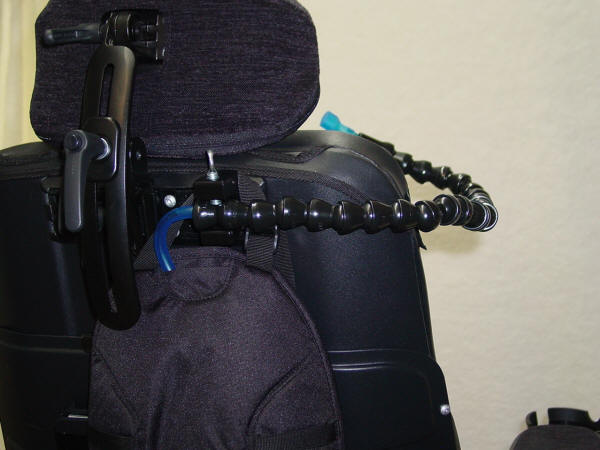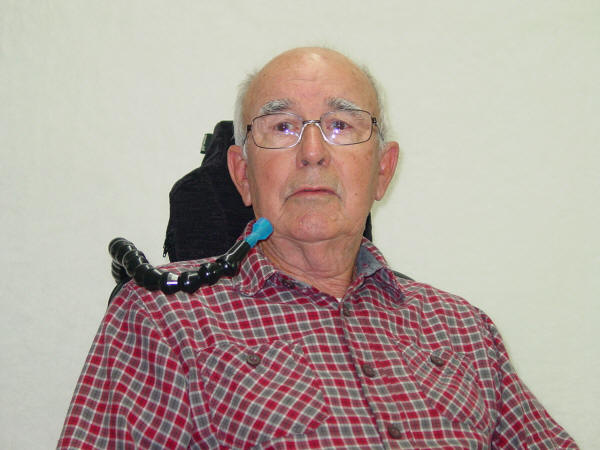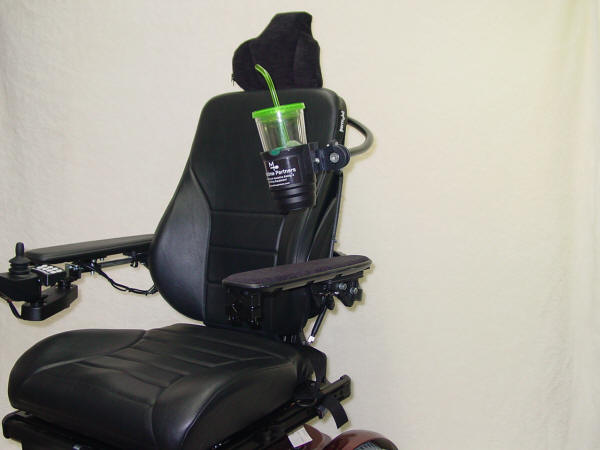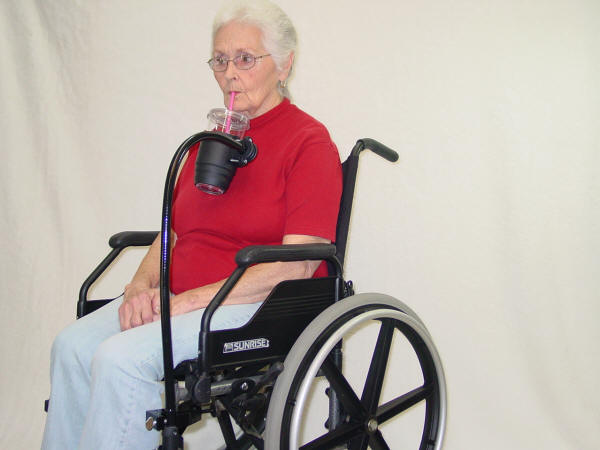Mealtime Partners, Inc.
Specializing in Assistive Dining and Drinking Equipment
May 2018 Independent Eating and Drinking Newsletter

|
May Topics:
|
||
|
Mealtime Partners Home Page Send a Comment or Suggestion |
|||
| Subscribe to Newsletters |
Words of Caution about Vector-Borne Diseases
Spring is here and summer is fast approaching. It is time to think about how we can protect ourselves and our loved ones from some potentially very nasty illnesses that can occur during hot weather. Just as using sun screen can protect us from acquiring a sunburn, using insect repellant can protect us from insect bites that can make us very ill. For individuals who have limited or no hand function it is very important to protect them from being bitten, as they are unable to swat away insects that might land on them and bite them.
This article is intended to provide a little understanding into the seriousness of being bitten by bugs, and provide insight into why it is so important to avoid bug bites. The occurrence of Lyme disease in the US, which is spread by being bitten by a tick, for example, was 28,921 confirmed cases in 2008 and in 2016, there were 26,203 cases confirmed. However, these figures are believed to be much lower than the true number of occurrences of Lyme disease and the Center for Disease Control and Prevention (CDC) suggests that the figures might be as large as 300,00 to 400,000 cases this year and estimates that only 1 in every 10 cases get counted. Diagnosing it is not easy, and false positives and false negatives can result from the tests, making it very difficult to identify the disease with a high degree of certainty. 216 million cases of malaria in 91 countries occur annually. Malaria is spread by the bite of a mosquito and an approximate 429,000 malaria deaths occur each year. Diseases like Lyme disease and Malaria are all called vector-borne diseases and their occurrence is increasing throughout the world.
A vector-borne disease is one that is transmitted by a microorganism that is transferred from one source (the host), an animal, or, in some cases, a human, to another animal or person, by a third entity (the vector), usually an insect. The microorganism is transferred from the host to the recipient by a vector that bites the host and passes pathogens that are in the host’s blood to the recipient. In the host the pathogens may cause no problem, but in the receiving entity they can cause serious illness or even death.
Several different types of transfers can be made in vector-borne diseases. Viruses can be spread by mosquitoes and ticks. Examples of diseases that are spread by the transfer of viruses include West Nile disease, yellow fever, and Zika. Bacteria, instead of a virus, can also be spread by ticks, lice and fleas, and can cause Lyme disease, the plague, and Rocky Mountain Spotted Fever. Malaria is caused by parasites spread by mosquitoes.
In simple terms, an insect can bite an animal that is infected with one of the many vector-borne diseases that exist throughout the world. As the insect feeds on the blood of the infected animal the infected blood circulates through the insect. Later, the insect will need to eat again. If it bites an animal that does not have the disease, the insect can transfer the virus, parasite, or bacteria to the non-infected animal that may now develop the disease.
Well known examples of this type of transfer, as discussed earlier in this article, are malaria and Lyme disease. Malaria is spread by mosquitoes biting humans. An infected female mosquito carries the malaria parasite in her salivary gland. When she takes a blood meal from a human (or other animal) she injects her saliva and the malaria parasite into the person. (Malaria is a mosquito-borne infectious disease spread by parasitic protozoans, a group of single-celled microorganisms.) Once inside the human, the parasite starts an entirely different life cycle. It starts to develop and multiply in the liver cells. The parasites multiply and expand into the red blood cells and successive broods of parasites develop and invade more red blood cells, killing them as they expand their territory.
In the case of Lyme disease, the infection is spread mainly by ticks. Immature ticks called nymphs (that are about the size of a poppy seed), are the most common way Lyme is spread. However, mature ticks can also spread the disease. Ticks can be found all over the US even though the disease is more commonly associated with the northeastern states. The tick is dependent upon blood meals throughout its life cycle to survive. In its early stages it may get a meal from a mouse that has the bacteria. Thus the infection starts. The tick might then infect a deer and at some point a human. When the tick attaches to a human, it tries to locate itself in an area of the body where it will be hard to find: the groin, under arm, or on the head hidden by hair. The longer the tick is attached to the person, the more likely it is to pass along the disease. The disease is spread through the body as a corkscrew-shaped bacterium called Borrelia Burgdorferi. Lyme disease starts in some cases as a bulls-eye on the skin where the bite occurred, but not all bites show any signs. Thus, Lyme can be very hard to identify in its early stages. The longer it goes unidentified, the more the bacteria multiply and spread through the body.
A vector borne disease that was not found in the U.S. ten years ago is now proliferating. Since 2007 to the present the Zika virus, named after the Zika Forest in Uganda, has spread to the Americas expanding into North America within the last year or two. The Zika virus, which is spread by mosquitoes, is part of the Denuge Fever family. In most people its symptoms are relatively mild and cause no long lasting problems. However, a woman who becomes infected during pregnancy can spread the disease to her unborn child and the impact on the baby can be devastating. Zika can cause microcephaly (where the brain does not develop properly and is small) as well as severe brain malformations in the baby. Zika is only one of nine new vector borne diseases that have been identified by the CDC.
Because vector borne diseases are spread by blood-sucking insects like ticks, flies, sand flies, fleas, and mosquitoes, people from almost all over the world are constantly exposed to the risk of being infected. The current guidelines for avoiding the risk of acquiring one of these diseases is to wear clothes that are light in color and cover the body entirely; and to use insect repellant whenever you go outside. In the case of ticks, it is wise to check all over your body if you have spent time outside, particularly in wooded and tall grass areas, to make sure a tick has not attached itself to you.
| HOT WEATHER IS HERE - MAKE SURE YOU KEEP HYDRATED |
|
A hands-free drinking system can enable someone to drink independently
throughout the day without needing help! Having a drink available allows you to
drink frequently and never get thirsty Mealtime Partners various drinking systems allow many individuals who are unable to use their hands to take a drink, to drink independently. The Hydration Backpack with Drinking Tube Positioning (pictured below) provides hands free drinking throughout the day for those who sit in a wheelchair and are unable to lift or hold a cup or glass. The drinking system is quick and easy to set up, the liquid container fits on the back of a wheelchair and the drinking tube can be positioned to meet the unique positioning needs of each individual. |

|
| Easy to install and remove from the wheelchair to fill or clean. |

|
| Hands-free drinking, 70 fluid ounces of water available for people on the go! |
| The Front Mounted Drinking Systems pictured below, can position a variety of cups and drink containers very close to the user's mouth for hands free drinking and allows a variety of other drinks to be made available throughout the day. For example, coffee in the morning, ice tea with lunch, a can of soda in the afternoon and a glass of milk before bed. The user drinks from their own container using a disposable straw. Because the straws and most of the containers can be disposed of, or washed in a dishwasher, it is the easiest drinking system to clean. It is available with several lengths of flex-arms and can be mounted on a variety of wheelchairs. |

|
Front Mounted Drinking System on Wheelchair with
Slide Track Mounting Rails Front Mounted Drinking System on Manual Wheelchair |
| All of the Mealtime Partners drinking systems are available for attaching to manual wheelchairs (i.e., wheelchairs with a tubular handle or other tubular structural components, as pictured above) and for powered wheelchairs with slide track mounting rails. To order any of our drinking products, click here, or call us at 800-996-8607. |
Hot Weather Reminder About Adequate Hydration
Each year Mealtime Partners reminds our Newsletter readers about the need for adequate hydration during the summer when temperatures are high. Infants, the elderly, and those with disabilities are particularly vulnerable to dehydration due to increases in temperature during the summer. Additionally, it should be noted that during warm weather, people spend more time outside and can become thirsty or dehydrated more easily. It is always better to drink too much water and make frequent visits to the bathroom, than to ignore thirst and experience any level of dehydration. The following article combines information that has previously been published but is very important to remember and worth revisiting.
Medical treatment for rehydration is estimated to have exceeded $5 billion in the U.S. in 2004. If these costs are projected to a 2018 population base, it is an enormous medical expense that could be significantly reduced with preventative treatment.
Approximately 70% of our body weight is water that is in our cells, our blood and the space between cells. Water is constantly lost from our body and must be replaced by drinking. We drink, we use the restroom, we perspire, etc. It is a constant cycle. However, the majority of people in the United States do not drink enough fluids.
Thirst is how our body indicates that the fluid in the body is out of balance (i.e., too low). Humans and animals have the innate ability to know when they should drink; however, many people routinely disregard the messages about drinking that their body sends them.
Because medical costs are skyrocketing, there is a movement towards providing preventative medical treatment to reduce overall medical costs in the United States. Many health conditions, if treated appropriately on a regular basis, can be managed without hospitalization or the need for emergency treatment, but if neglected can become life threatening. Some examples of these are diabetes, high blood pressure, and some heart conditions. However, something as simple as adequate hydration is often overlooked as a significant health issue that is essential for ongoing good health.
If dehydration is not treated it can have a very serious medical impact. The first signs of dehydration are a headache, dark yellow urine, reduced or lack of sweat, nausea and/or vomiting. Should dehydration worsen, symptoms will escalate to altered mental status, fatigue, sleepiness and depression. If left untreated dehydration can be life threatening.
Dehydration is an ongoing problem for many people, especially those with disabilities. It is responsible for health problems such as urinary tract infections, kidney problems, skin tissue deterioration, and headaches. All of these conditions require medical treatment that, in some cases, can be protracted, require hospitalization, and thus be very expensive.
In most cases, dehydration is preventable! However, it takes a vigilant caregiver to offer a drink on a regular schedule to keep someone who cannot drink by themselves adequately hydrated. This is a difficult task when a caregiver is undertaking many care-giving responsibilities. Often, what happens is the person is offered a large drink, infrequently. This introduces an element of risk to the health of the person. When drinking a large quantity of liquid at a time, the person drinking may take a sizeable volume of liquid into their mouth at one time, and swallow repeatedly to clear all of the liquid from their mouth. With each swallow, within the sequence of swallows, the risk of choking or aspiration increases. Therefore, because of the added risk, this is a poor method of avoiding dehydration.
For most people, a drinking system can be made available to them even if they are unable to hold or lift a cup. Regardless of this easy solution to avoiding dehydration, Medicare, Medicaid, and private health care insurance providers consider drinking systems as “aids for daily living” and do not cover their cost. However, they do cover the cost of an emergency room visit and/or hospital stay that was brought about by dehydration. According to the Agency for Healthcare Research and Quality (AHRQ), about one in ten of the nearly 40 million hospitalizations in 2008 were potentially avoidable. Dehydration was among the conditions for which hospitalization was avoidable with the appropriate outpatient care.
Additionally, according to the National Pressure Ulcer Long-Term Care Study (NPULS), dehydration was associated with a 42% increase in risk of developing pressure ulcers in nursing home residents. The estimated annual cost for treating pressure, or decubidus, ulcers in the United States is $1.3 billion.
Mealtime Partners provides hands-free drinking systems that can be mounted on a wheelchair, bed or table, and make water available to users throughout the day and night. For more information about these drinking systems, click here.
|
Did You Know? Did you know that more than 700 children have died from vehicular heatstroke in the US in the past 20 years? Every summer infants and small children die when they are forgotten and left in a parked car, or accidentally lock themselves in a car and can’t get out. Children are less able to keep their body temperature from rising than adults and cannot tolerate being in a hot environment for long. The inside temperature of a parked car can rise as much as 20 degrees in 10 minutes; therefore, it doesn’t take long for an infant or child to develop heatstroke. Of course cars heat up much faster during the hot summer months but infant car deaths from heat related causes can happen at any time of year. Psychologists recommend that whenever someone puts an infant or child into a car seat in the back seat of their car, they place an item next to the child that is essential for them to take with them when they leave the car (e.g., items like a purse, telephone, bill fold, or shoes). Shoes are a very effective item to place next to the baby because you really can’t walk away from the car without being aware that you are bare footed. |
To subscribe to the Mealtime Partners Newsletters, click here./a>
Mealtime Partners Website Navigation:
Home | Dining | Drinking | All Products | Ordering | Training | Calendar | FAQ | Newsletters | Contact
Please send comments and suggestions to newsletters@mealtimepartners.com
Copyright © Mealtime Partners, Inc. 2018
All rights reserved.